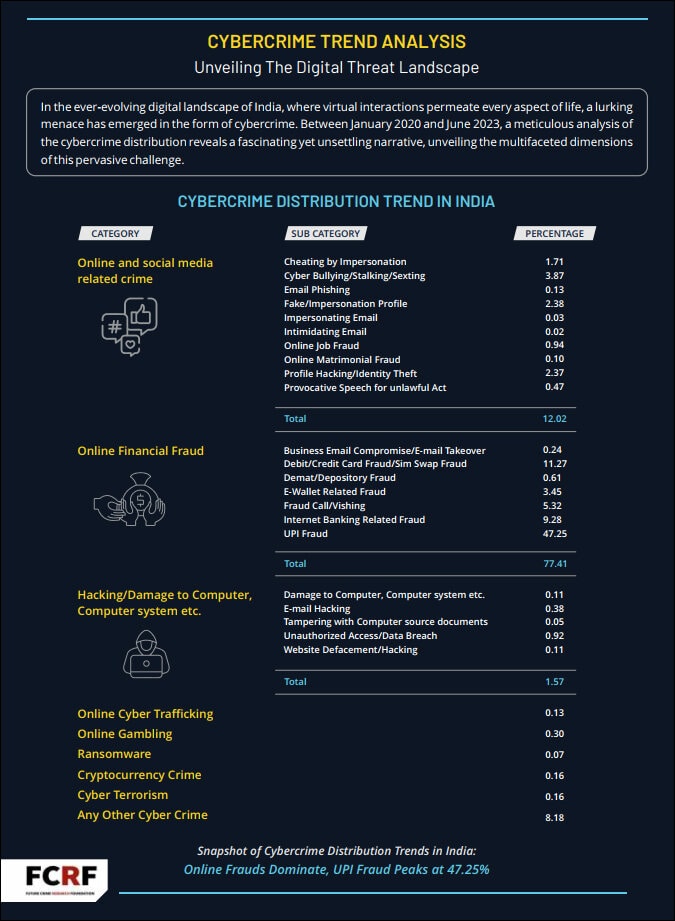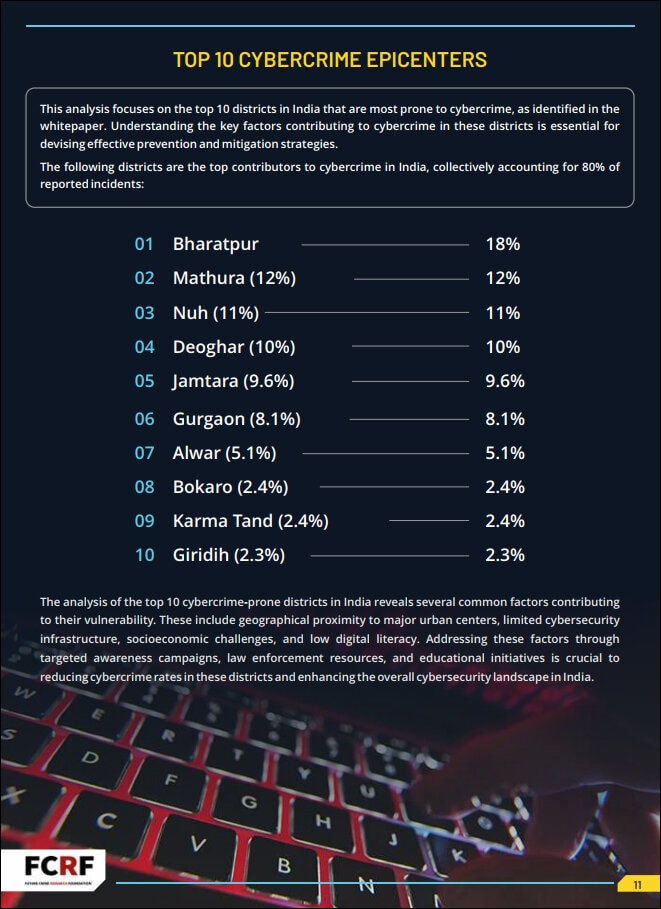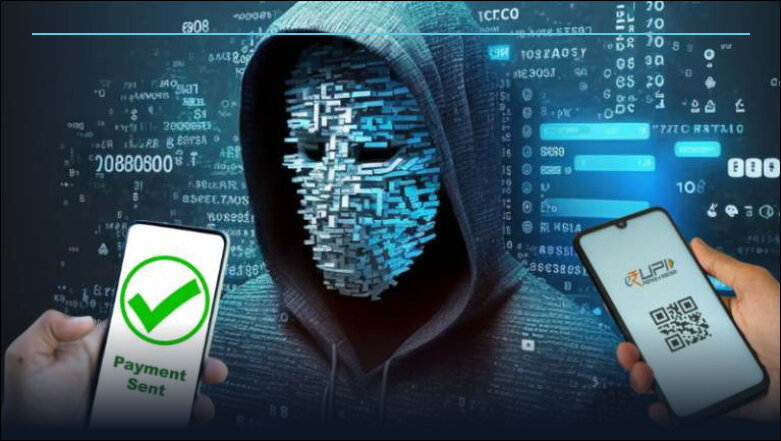Don’t pick unknown calls from these hotspots as you could be bait for cybercriminals says Satyen K. Bordoloi as he uses a new report to survey the lay of India’s cybercrime landscape and divine reasons for the same.
The day was boringly usual for Mr Radhakrishnan of Kozhikode till he received a video call from an unknown number. It turned out to be a friend, in trouble now, who requested ₹40,000. He transferred it. Only when he got another call asking for more that he squirmed. He dialled the actual number of the same friend and he seemed well. He realised he had been conned. But how exactly – a deepfake, AI face and voice-swapping scam – he’ll come to know much later and is something he hadn’t imagined in his wildest fantasy. The origin of the man who robbed him: Surat.
He was lucky. Just a month before in May this year, a man in China lost 4.3 million yuan ($622,000) in a similar fraud. Incidences of crimes where AI deepfake technology is used to mimic a person’s face and voice are becoming common and have reached Indian shores. It is at the cusp of this beginning of its proliferation that a report created by IIT Kanpur incubated Future Crime Research Foundation (FCRF) called, “A DEEP DIVE INTO CYBERCRIME TRENDS IMPACTING INDIA” which can be read and downloaded here, holds special significance.
The report analyses cybercrime trends between January 2020 to June 2023 and “delves into a comprehensive analysis of the data, presenting a meticulous examination of the alarming trends in cybercrime across various categories and subcategories along with cybercrime hotspots and emerging centres.” In plain speak, this means that the report tries to fill us in on the emerging trends in cybercrime, put out a lay of the landscape of digital frauds and highlight hotspots so that investigative agencies, as well as all of us, can be wary of these methods and places.

THE MAJOR CYBERCRIMES IN INDIA:
The report goes into every kind of cybercrime reported in India, from matrimonial fraud to debit and credit card fraud. Among these, cyber bullying/stalking/sexting sits at 3.8%, debit/credit card fraud/sim swap fraud at – as expected – a high of 11.27%, e-wallet related frauds at 3.45%, fraud call/vishing at 5.32, internet banking related fraud at 9.28% and staggeringly UPI frauds make up nearly half of all digital frauds at 47.25%.
Knowing the kind of fraud that happens the most, could help you protect yourself and those around you. Also, the fact that nearly half of the frauds are related to UPI where attackers exploit vulnerabilities in India’s widely used real-time payment system to conduct unauthorized transactions, should give a wake-up call to the government to set up systems against them.

THE MAJOR CRIME HOTSPOTS IN INDIA:
The report also analyses the districts that contribute the most to cybercrime. While it has some known suspects, a few are surprising and new. The following ten districts account for 80% of reported instances of cybercrimes in India: Bharatpur (18%), Mathura (12%), Nuh (11%), Deoghar (10%), Jamtara (9.6%), Gurugram (8.1%), Alwar (5.1%), Bokaro (2.4%), Karma Tand (2.4%) and Giridih (2.3%).
This is helpful at an individual level because, with apps like TrueCaller that give a caller’s location, one can avoid unknown rings from these places.
At a governmental level though, understanding the key factors that make these places hotspots of crime, will help us devise prevention and mitigation strategies. The report succinctly finds these and says, “The analysis of the top 10 cybercrime-prone districts in India reveals several common factors contributing to their vulnerability. These include geographical proximity to major urban centres, limited cybersecurity infrastructure, socioeconomic challenges, and low digital literacy. Addressing these factors through targeted awareness campaigns, law enforcement resources, and educational initiatives is crucial to reducing cybercrime rates in these districts and enhancing the overall cybersecurity landscape in India.”

Then it goes into the analysis of each of these crime centres to paint a fascinating picture of the reasons behind them. In Bharatpur, the reason for high cybercrime as per the report is due to its proximity to urban centres like Delhi and Jaipur. The same is true for Nuh in Haryana. Mathura makes the list due to its prominence as a tourist destination and Deoghar because of insufficient law enforcement. In Jamtara – as anyone who’s seen the Netflix series will know – cybercrime has become its culture with many well-organised criminal networks working unfazed despite its infamy for years.
The type of crime is also state-specific. E.g., Rajasthan – which in 2020 and 2021 recorded the highest number of rape cases in the country – specialises in Sextortion, online marketplace fraud and customer care fraud, while Jharkhand does OTP scams and KYC frauds best. Delhi has a speciality in loan app harassment, gift fraud, matrimonial fraud, job and investment fraud etc.
The report does one better by giving a list of ‘Emerging Cyber Crime Hotspots’ for each state in the nation. E.g., in Assam, Barpeta, Dhuburi, Goalpara, Morigaon and Nagaon have seen a spike in cybercrimes while in Gujarat Ahmedabad and Surat are notorious. In Maharashtra Aurangabad and Mumbai have seen a rise. These are among over 80 districts in India that could make the blockbuster list in future reports.

WHY CYBERCRIMES ARE GROWING IN INDIA:
The Netflix original series Jamtara which put the crimes of the district not just into national, but international spotlight, was released in 2020. Yet nearly 4 years on Jamtara continues to be responsible for a staggering 9.6% of all cyber crimes committed in the country. If bringing attention to its criminal activity by making a globally recognised series that has now run into multiple seasons over four years is not enough to wake up the authorities, I don’t know what is.
Mere polemics can’t explain what’s going on. The report touches upon many specific factors for these crimes. I won’t get into its details as one can read it in the report. Instead, we’ll talk about larger factors at play here.
Digital connectivity in India in the last decade has exploded exponentially. We have the most nationally widespread and cheap internet access compared to anywhere else in the world, thanks both to our population density and multiple network providers at the beginning of this race. India’s digital infrastructure is better in most ways than even of USA which despite one-third of our population, is struggling because it is three times our size and connecting such a huge country with high-speed internet access is not cost-effective.

(Image Credit: Wikipedia)
Indian politicians are hence not wrong to brag about India’s digital connectivity and infrastructure. The problem is that while they stake claim to its benefits, they don’t pay even a fraction of that attention to how it is exploited, how vulnerable these new digital systems are and how they can endanger their users. Digital India has grown faster than the ability of the system to cope with the threats and challenges it throws up.
The other problem is the Indian police. Their portrayal as digital novices in films isn’t far from the truth. And it’s not really the fault of the police force for they are understaffed, hence overworked, leaving little time for a work-life balance. Asking them to be digitally savvy enough to solve cybercrimes is a tall ask.
All this has created a gap that is rife for criminal minds to take advantage of. India has no shortage of minds educated in digital systems with computer science being the most coveted field after engineering and medicine. We thus have a big pool of youngsters educated in computer science who don’t have legitimate work thanks to the rise in unemployment. A tiny percentage of them turning to crime as a failure of the system is enough to wreak havoc in the nation. The government needs to find mitigating strategies, a key would be gainful employment for the digitally literate.

The current police force can’t do the trick. The solution will come from special cybercrime units in each police station in the country. Currently, every city has one police station that specializes in cybercrimes. But with most of our lives being lived digitally, it is criminal to not increase this part of the police force since crimes are facing a corresponding rise.
What the report highlights, is just the beginning. As the case of Mr Radhakrishnan shows, AI has entered the scene. The kinds and types of crimes that can be committed with the help of AI systems, are barely in their infancy. As time goes by and with generative AI technology improving, the nature and sophistication of crimes using them will increase exponentially. When that happens, the cybercrime units will need further education. Or maybe we will need to have separate AI crime departments in every police station in the nation to fight them effectively.
The time to begin a concerted fight against cybercrimes in India was yesterday. Despite starting late, we could still make it as long as we put, as the report states, “concerted efforts from all stakeholders” with “Government bodies, private enterprises, law enforcement agencies, cybersecurity experts, and individual users” coming together to “forge a resilient defence against the ever-evolving tactics of cybercriminals.”
In case you missed:
- Digital Siachen: Why India’s War With Pakistan Could Begin on Your Smartphone
- India’s Upcoming Storm of AI Nudes & Inspiring Story Of A Teen Warrior
- Rise of Generative AI in India: Trends & Opportunities
- Digital Siachen: How India’s Cyber Warriors Thwarted Pakistan’s 1.5 Million Cyber Onslaught
- Why Elon Musk is Jealous of India’s UPI (And Why It’s Terrifyingly Fragile)
- And Then There Were None: The Case of Vanishing Mobile SD Card Slots
- AI Washing: Because Even Your Toothbrush Needs to Be “Smart” Now
- AIoT Explained: The Intersection of AI and the Internet of Things
- AI Taken for Granted: Has the World Reached the Point of AI Fatigue?
- A Manhattan Project for AI? Here’s Why That’s Missing the Point










